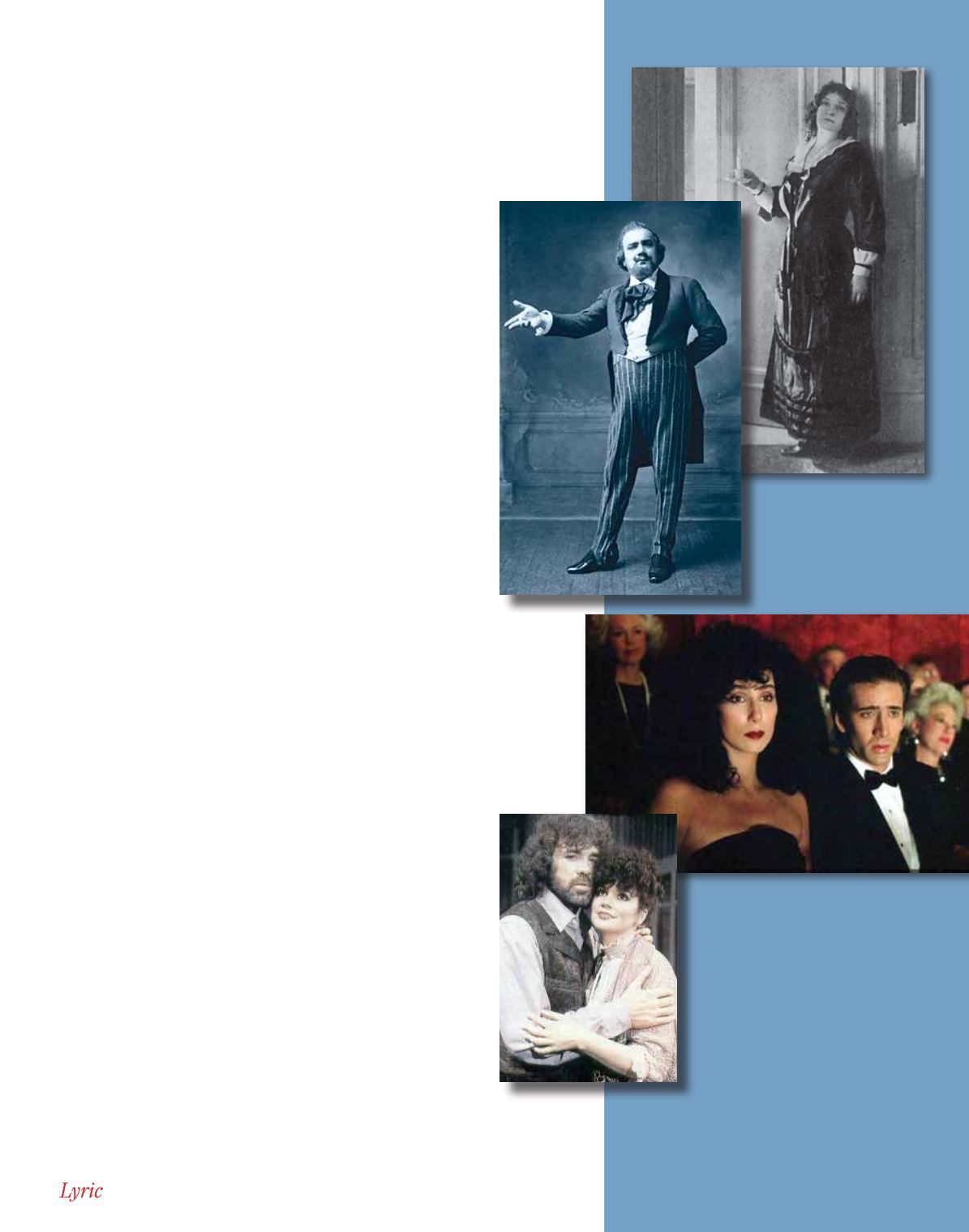
conducted by the young Arturo Toscanini. The response was decidedly
tepid. Such a flaccid reaction seems mind-boggling today. Perhaps
Puccini’s music seemed a trifle dull, lacking both the pyrotechnical
dazzle of the old repertory or the primal intensity of the new –
particularly in the absence of a real
aria d’urlo
, a feature of verismo in
which a character veers from lyricism and essentially begins to scream
(though we have a suggestion of that from Rodolfo at Mimì’s death).
In any case, this was not a matter of audience favor overriding critical
dissent (Puccini would experience that later with
Tosca
). This time
around, the audience wasn’t crazy about it either.
Bohème
’s ascension
was to be fueled by its interpreters.
Chief among these was the great Australian diva Nellie Melba.
Dame Nellie was a huge star, both at the Met and particularly at
Covent Garden, where she ruled with an iron fist. She was also a
soprano in search of new material. Melba had built her reputation in
such florid Italian roles
—
most prominently Donizetti's Lucia
—
and
was also celebrated as Gounod's Juliet and Marguerite. Audience tastes
had changed, however. Melba’s outing as Nedda in
Pagliacci
was well
received, but an ill-advised attempt at Brünnhilde in Wagner’s
Siegfried
was a disaster. “I have been a fool,” Melba told the press, in a rare
moment of humility. In truth, Melba was anything but. She knew she
needed to evolve, and that the excesses of verismo were a poor fit for
her vocally and temperamentally. But Puccini’s Mimì was something
else. Here was a modern role that would allow her to exploit her
preternaturally beautiful timbre and exquisitely floated upper tones.
Melba plunged into six weeks of study in the role with Puccini himself.
The composer declared her an ideal Mimì (an assessment informed,
no doubt, by his awareness of Melba’s considerable influence with
management – Puccini was no fool, either).
Melba aggressively campaigned for Covent Garden to mount
Bohème
for her, which they did in 1899, despite their distaste for
the “new and plebeian opera.” Her performance created a sensation.
Soprano Mary Garden left a revealing account of Melba’s achievement,
specifically the floated high C concluding “O soave fanciulla.” “The
note came floating over the auditorium of Covent Garden; it left
Melba's throat, it left Melba's body, it left everything, and came over
like a star and passed us in our box, and went out into the infinite. I
have never heard anything like it in my life, not from any other singer,
ever. My God, how beautiful it was! That note of Melba's was just like
a ball of light.” The Met capitulated as well, and Melba became their
first Mimì in 1900, with the unusual caveat that she sing the mad scene
from
Lucia di Lammermoor
following the opera, as a panacea for those
who remained skeptical.
Then there was Caruso. If there ever was a perfect match of
composer and voice, it was Giacomo Puccini and Enrico Caruso.
Caruso’s extraordinary tenor instrument, with its ringing, honeyed
sweetness on top and surprising complement of beef in the middle
register, was ideally served by Puccini’s music. It could have been
written for him, and Caruso knew it. His appearances as Rodolfo
opposite Melba at Covent Garden in 1902 caused pandemonium. The
press also had a field day with an extra-musical event that occurred. As
legend has it, Caruso, a notorious practical joker, pressed a hot sausage
into Melba’s hand as he sang “Che gelida manina” (“Your little hand is
frozen”). It was a juicy little story, and it kept the singers – and
Bohème
– firmly in the public consciousness.
O P E R A N O T E S | L Y R I C O P E R A O F C H I C A G O
October 6 - 20, 2018
|
31
Pictured as Rodolfo
and Mimi are the two
legendary singers who
did the most to bring
La
bohème
to world attention
– Enrico Caruso and
Dame Nellie Melba.
(Above) Nearly a century after
the heyday of Melba and Caruso,
La bohème
was essential to one of
the most successful films of the 1980s,
Moonstruck
. In a crucial scene,
Loretta (Cher) attends a Metropolitan
Opera performance of
Bohème
with
opera-loving Ronny (Nicolas Cage),
her fiancé’s brother, who’s fallen in
love with her.
Singing in English, country singer Gary Morris played
Rodolfo and Linda Ronstadt was Mimì in the New
York Shakespeare Theater’s 1984 English-language
production of
La bohème
.
METROPOLITAN OPERA ARCHIVES








